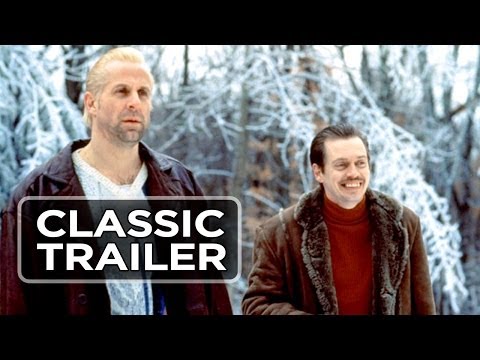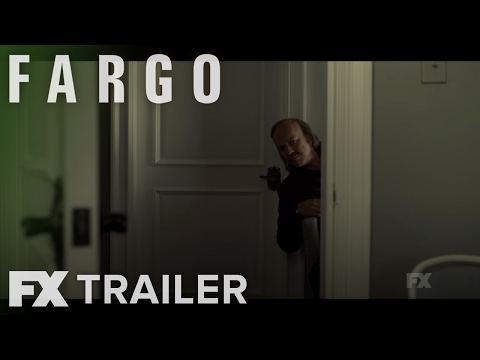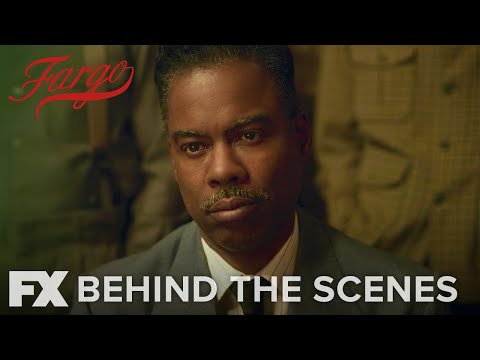The Coen brothers’ 1996 film “Fargo” is a cinematic original.
Surely, it derives certain tropes the brothers had worked out over the course of their learning curve—from “Blood Simple” (1984)—through gems like “Raising Arizona” (1987), “Miller’s Crossing” (1990), “Barton Fink” (1991) and “The Hudsucker Proxy” (1994).
In fact, everything present in “Fargo” can be traced back to their previous films. And everything the Coen brothers have created has been founded upon and been a development of an undeniable film signature developed and embellished ever since.

If they were both diagnosed with a terminal illness, their coda could be, from “No Country for Old Men:
“I don’t want to push my chips forward and go out and meet something I don’t understand. A man would have to put his soul at hazard. He’d have to say, ‘O.K., I’ll be part of this world.’”
That’s the end of this particular explanation. You have to be willing to put your soul at hazard. And that’s courtesy of author Cormac McCarthy, who wrote the book upon which “Old Men” is based.
Everything else belongs to Ethan and Joel Coen.
RELATED: Why ‘Fargo’ Franchise Is Both Necessary and Rare
The FX television series “Fargo” (which the brothers co-executive produce) has mined the Coen’s oeuvre adroitly—alternately capitalizing on its bleak landscapes and quirky humor while deepening the moral depths explored within:
- Good and evil
- Absurdity and meaning
- Justice and mercy
- Individual free will and Divine Providence
Seasons 1 & 2 recreate the kind of humor that remains a Coen imprint. The comedy leavens the Tarantino-esque grotesquery with a down-home humor without the meanness of their contemporary.
The “Pulp Fiction” auteur’s take on reality has lacked the hope the Coens’ Jewish faith seems to have served as grounds for something more than the gallows humor Tarantino has never risen above.
RELATED: Why We Need to See Tarantino’s ‘Star Trek’ Vision
Where the Coens reserve the right to include miracles in a universe unexplainable except by the meaning of human life; Tarantino offers the striving toward meaning that humans ever desire in a universe only too willing to clap shut upon their hopes.
Both universes offer opportunities for meaning and hope—but while the Coens leave a door open, Tarantino always slams it shut.
The difference in satisfaction here is important.
Tarantino’s world often ends in Hell. The Coen brothers’, while it is never quite definitive—which is telling—always leaves hope.
One thereby is tragic, the other is comic.

“Fargo” seasons 3 and 4 deliver admirably in the Coen universe. Season 3 continues what seems stunt casting—but offers such a quirky and dirty story and such perfect performances that the odd accents and familiar faces are soon forgotten.
The virtue of Season 3 (as a counterpart to FX’s Season’s 1 & 2) is its return to the innocence of the original film. It offers seemingly parallel stories –tainted and untainted—in a connected universe in which bumbling men (Ewan McGregor’s Ray/Emmit Stussy) are pitted against a competent and good woman (Carrie Coon’s Gloria Burgle).
It recalls the pitch between Marge Gunderson (Francis McDormand) and Jerry Lundergaard (Willaim H. Macy), whose world is sucked into the underworld by his own poor choices, befouling every wish for the good life he might ever have conceived.
And while it includes a connection to an underworld more evil and big than anything the principles might imagine (and so beautifully portrayed by its principle devil, V.M. Vargis (David Wheeler/Thewlis), it never succumbs and, by the end, might even endure against it.
RELATED: ‘Fargo’ Cop Proves Nice Guys Still Matter
To be sure, the elements of absurdity and miracle are developed and deepened in Seasons 3 & 4—including a visit to “The Big Lebowski’s” Bowling Alley (in Season 3) including a Jewish Angel-like spirit dispelling wisdom from past and future.
Along with the repetition of plot devices from the original (a suspect apprehended fleeing through the window of a seedy motel and a major character killed by accident with a shard of glass—perhaps a feint to Frear’s “The Grifters.”
Both seasons parody their originals and deepen our thinking about the universe they continue to explore.

Season 4, in a brilliant turn starring Chris Rock (as Loy Cannon) is both darker and deeper. The bleak winter landscape is maintained, but the universe turns from white to brown.
Not only because the African-American crime syndicate comes into competition with the Italian model, but because the color scheme cinematographically matches the change in tone.
Season 4 takes place inside rather than outside, depositing the viewer back to the 1950s and offers a deep backstory to the Fargo/Kansas City connection established in Season 2.
Only one character, Wes Wrench (Russell Harvard) survives through Seasons 1, 2, and 3 and establishes securely that the Coens insist upon some elemental character to ensure that some semblance of justice prevails, in a Faulknerian sense, across the bleak landscape they have established.
And while every film and season has represented some redeeming character from almost every race represented, Season 4 seems to have it in for the Italians—Machiavels all, who get their just desserts—by accident or by design.
RELATED: How ‘Barton Fink’ Let the Coen Brothers Push Us to the Brink
In the end, “Fargo” has always explored the deep Augustinian question of the relationship between God’s Providence and individual free will. While Augustine’s Autobiography and City of God are explicit explorations of this great question, “Fargo” has been the laymen’s questioning, in light of the mendacity of human behavior along with the beauty (well, not enough beauty) of existence.
What does it all mean?
We are born and we die. In between, we make a series of choices, and these choices have consequences that knit into our experience the threads that constitute our lives.
At that same time, our choices affect others’ lives and their experiences are lightened, enlightened, or stained by our decisions.
“Fargo” (whether the original film or the series) suggests that we are both in control and not in complete control of those choices. Tornadoes rage. Earthquakes move the earth. Random characters walk into and out of our lives—disturbing the rolls of our die, or curving the ‘luck’ in our direction.
Sometimes the consequences of our choices mean everything. Sometimes a Rabbi (the Coens’ “A Serious Man”) says rightly, “Look at the parking lot…”
In other words, it means something, it means nothing. That’s the Jewish way. Or, it means everything.
In Season 3, the character V.M. Varga says, “The problem with the world is not evil; it is good.” This is the key to the Coen brothers’ world. And the FX series has been true to that world.
It is a universe in which the absurd is allowed because the meaningful is the basis; it is a universe in which tragedy relies upon comedy, because the most meaningful things are not murders in graveyards but lasagnas in kitchens.
We, as humans, laugh and cry spontaneously, because a sense of proportion in all things is an instinct, not a learned thing. Every moment of right in “Fargo” is not learned, it is innate. Every moment of evil is taught. And every moment of good is a choice and a grace.
Gregory Borse teaches film appreciation, history & development, philosophy, literary theory and a variety of literatures on a small campus in a large university system in the South. His short story “Joyellen” was selected as an online exclusive for West Trade Review’s Summer 2021 issue. He has published or presented in the past on Hitchcock’s “Psycho,” Stephen Frear’s “The Grifters” and seminal horror films ranging from “Nosferatu” to “Halloween,” “The Silence of the Lambs” and “The Strangers,” among others.
The post ‘Fargo’ Part 2: Franchise Offers Something Tarantino Never Could appeared first on Hollywood in Toto.
from Movies – Hollywood in Toto https://ift.tt/3qW5boy

No comments:
Post a Comment